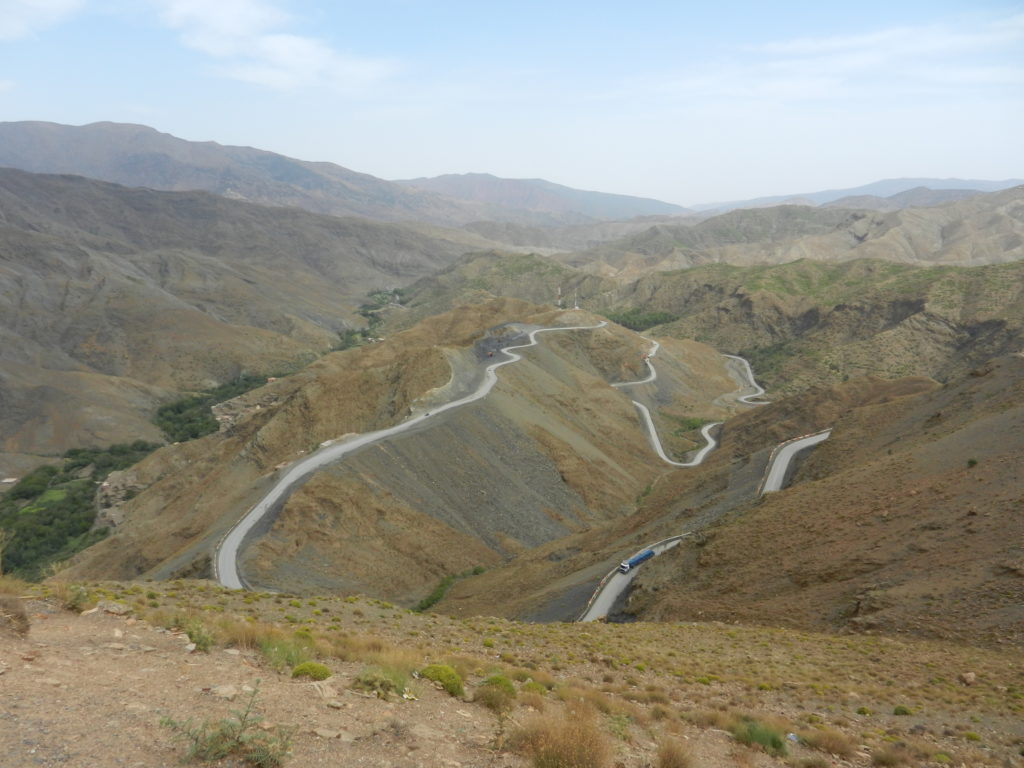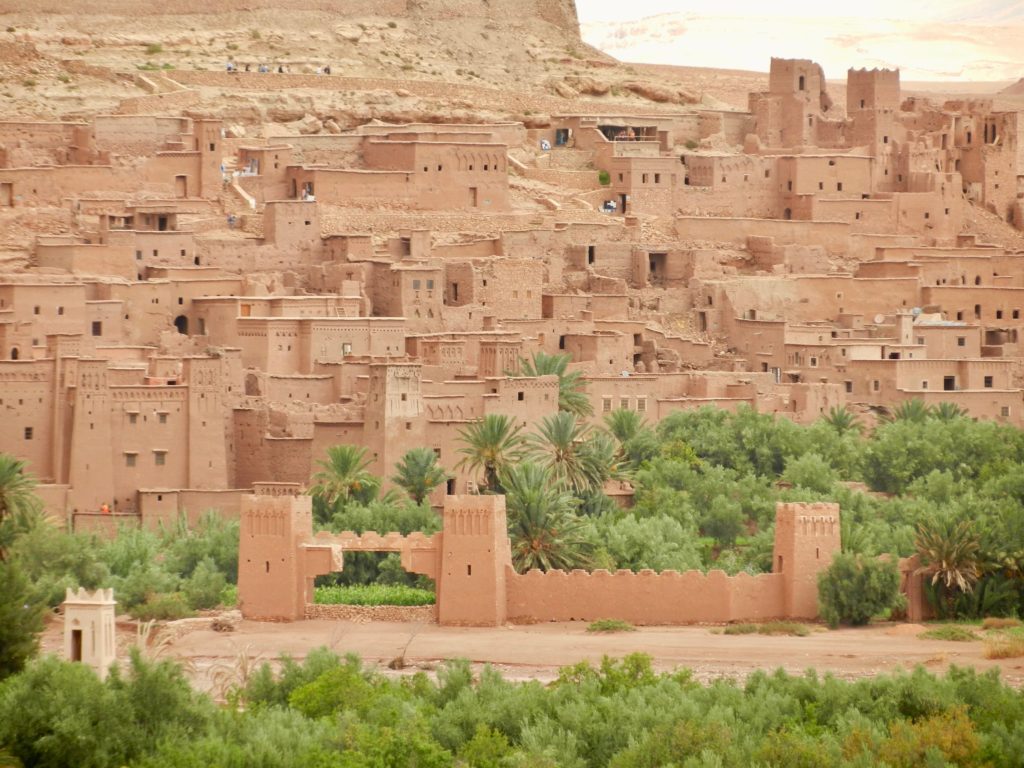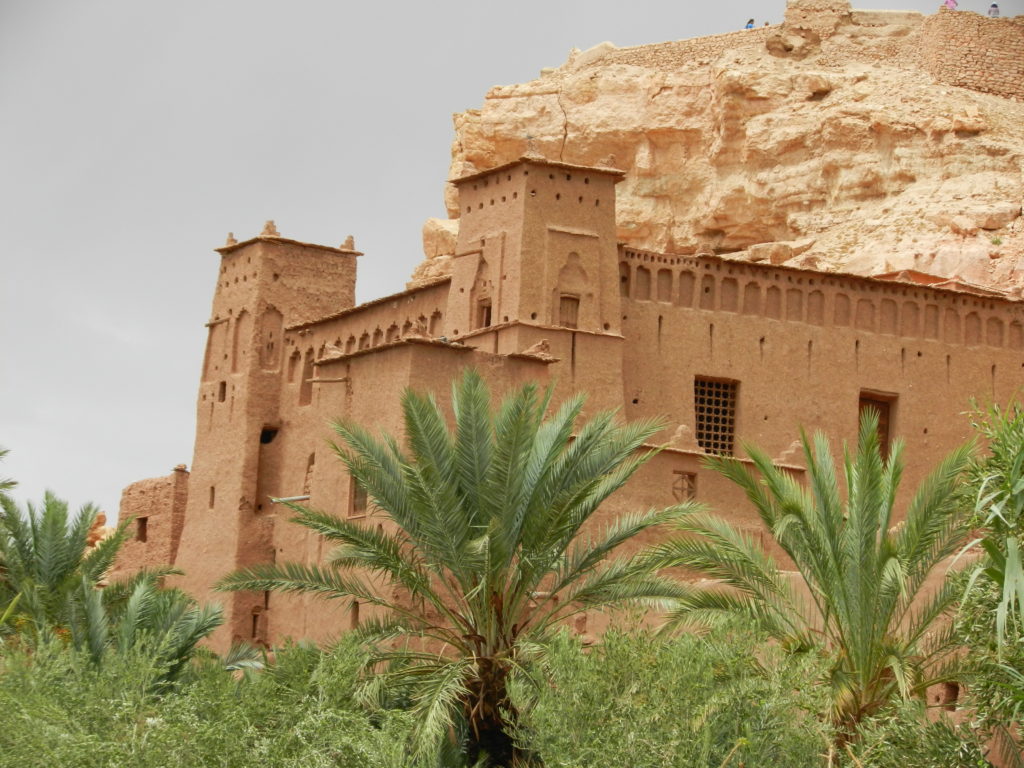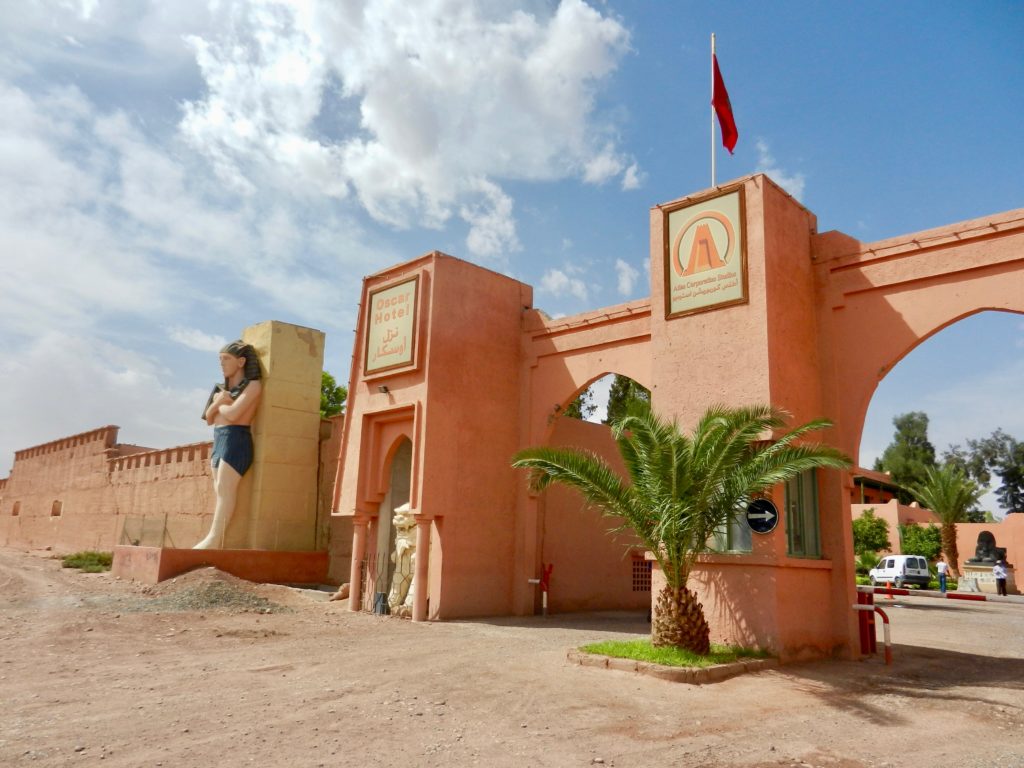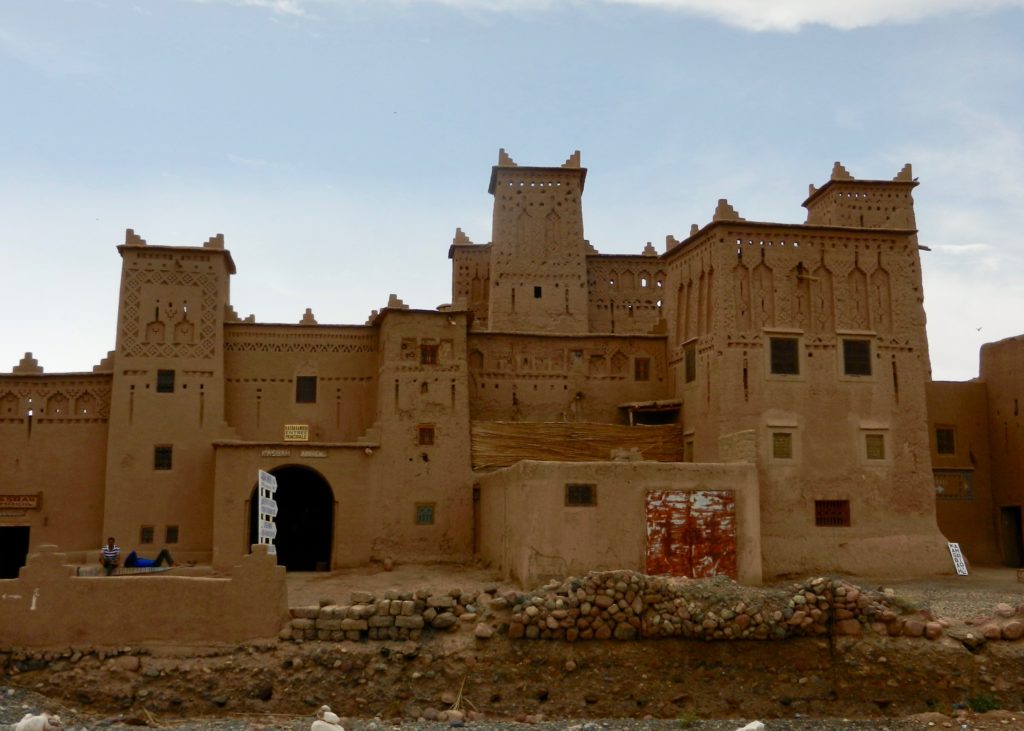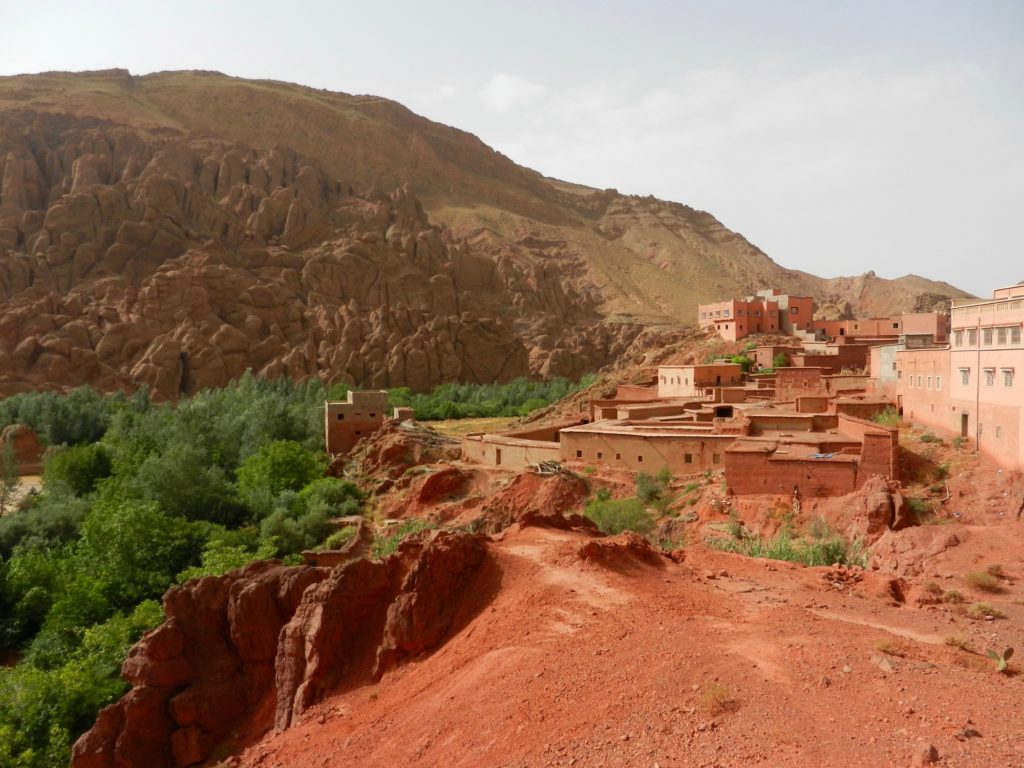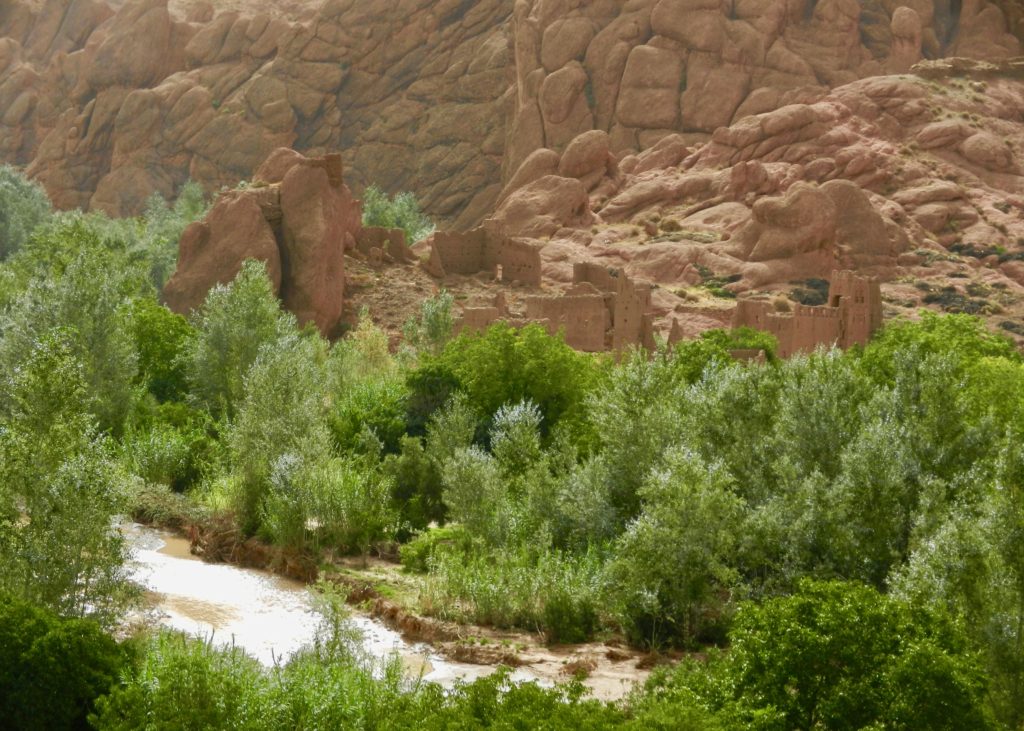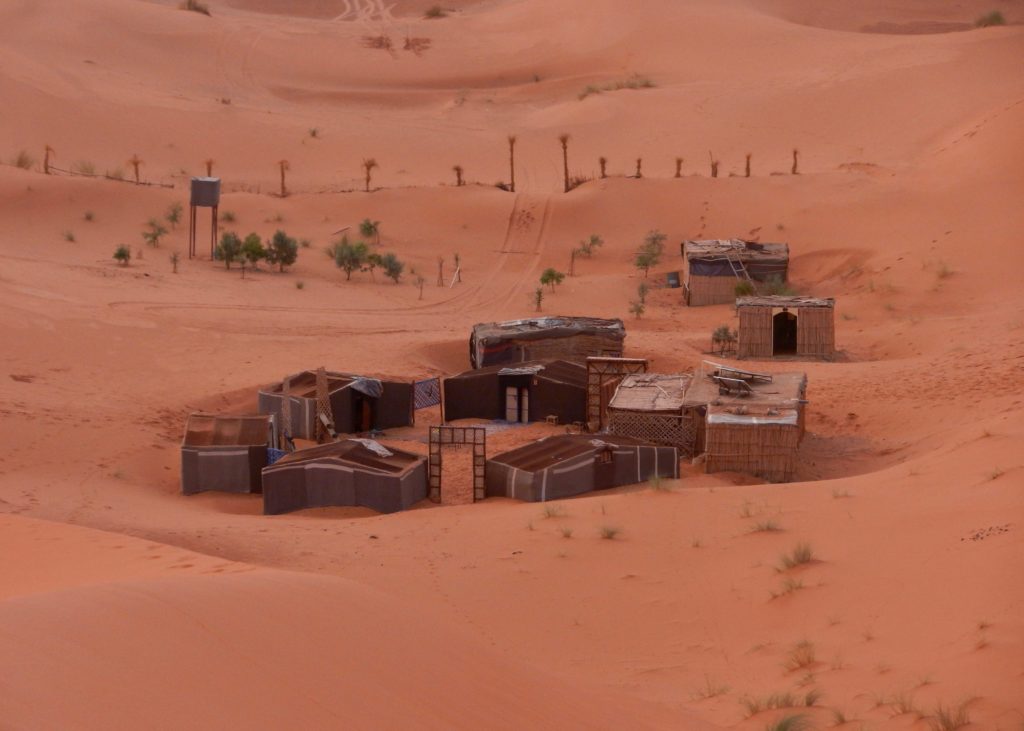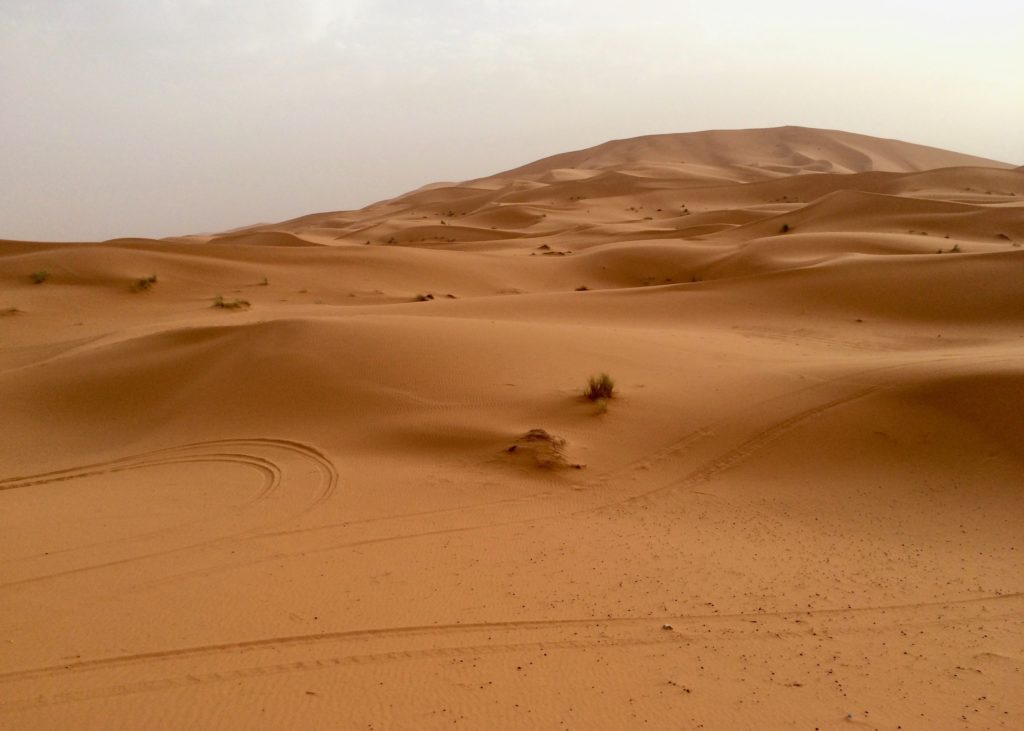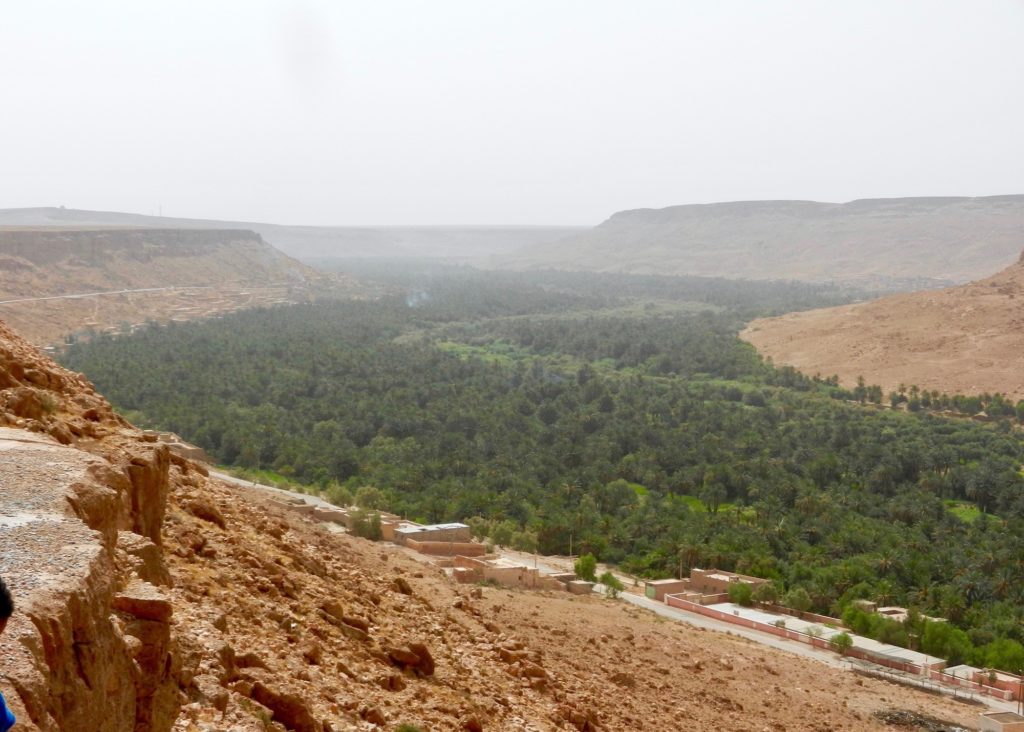Morocco is nothing more than a poolside holiday to many European tourists. While there are beautiful resorts surrounding Marrakech, you will need to head east, over the Atlas Mountains, to truly experience Morocco.
In August 2015, I hired Ali from Morocco Countryside Tours as a guide to take a friend and me on a three-day tour of the Sahara. Ali drove us in a safe and luxurious Toyota 4×4 SUV, with a fully-functional A/C. The tour included Ali (our driver and guide), the SUV, gas, 2 nights of accommodations and meals, and entrance fee to the parks. It was a bargain, and Said (the owner of Morocco Countryside) was very responsive and helpful. If you need a tour guide or drive in Morocco, this is the company to use.
Day One: Atlas Mountains
Tizi n’Tichka Pass
Ali met my friend and me at our riad in the Marrakech Medina. After an hour and a half, we reached the top of Tizi n’Tichka Pass (2260m), the high road in Morocco. From this pass, many small Berber villages can be seen on the hillsides. The Berber people are native to North Africa and pre-date the spread of Islam; they have their own language (Berber), which is one of four official languages of Morocco: Arabic, French and Spanish are the other three.
Kasbah Ait-Ben-Haddou
On the eastern side of the Atlas (and about four hours from Marrakesh), we visited Kasbah Ait-Ben-Haddou, an UNESCO World Heritage Site and a popular filming location for Hollywood; Lawrence of Arabia, The Gladiator, and Game of Thrones (Yunkai) were all filmed here.
After crossing the river, we winded our way through the narrow mud brick streets, and slowly climbed our way to the mountain top just above the city. The kasbah is still inhabited by Berber people today; some sell souvenirs out of their home and others still raise livestock within the city’s walls.
Ouarzazate
After leaving Ait-Ben-Haddou, our next step was Ouarzazate, home to Atlas Studios, the largest film studio in the world. Massive sets are built in the desert and serve as stand-ins for Egypt (The Mummy), Jerusalem (The Passion of the Christ) and the Arabian Peninsula (Lawrence of Arabia).
Skoura
After driving down the highway for a couple more hours, we eventually pulled over and onto a dirt road. The dirt road eventually led us to a palm-covered oasis, Skoura, which locals call The Road of A Thousand Kasbah. We were surrounded by traditional mud ksars and palm trees.
Rose Valley and Dades Valley
After driving through the windy roads and brick red canyons in Rose Valley, we pulled into our cliffside hotel, Chez Pierre, in Dades Valley. Dades Valley is an other-worldly place and incredibly remote — over 6 hours from the nearest airport. Chez Pierre is the best (and only five star) hotel in Dades Valley and it’s surprisingly affordable; room and board is runs about $80 per night. It’s the perfect place to kick back and relax before an overnight camping trip in the Sahara.
Day Two: The Gateway to the Sahara
Todra Gorges
After an early breakfast, we left Dades Valley and drove straight to Todra Gorges, the deepest gorge in Morocco. In some places, the walls reach heights of over 160 meters and are a mere 10 meters apart.
Rizanni
Our last stop before heading into the Sahara dunes was Rizanni, our guide Ali’s home town. He took us to the local market to barter with the shop hands for souvenirs, turbans and djellabas. We also explored the market and saw our fair share of slaughtered animals; unlike Bourdain’s trip to Rizanni, we did not leave with a halal-butchered goat to cook in our desert camp.
Sunset over Erg Chebbi
Just before sunset, we pulled into a small stable on the ends of Erg Chebbi. From there, Ali introduced us to our Berber guide who promtly threw us on the back of a camel with our bags in tow. Our Berber guide couldn’t speak any English (in fact, I’m not even sure he spoke Arabic).
We rode on camel back for nearly an hour, weaving through the massive dunes of Erg Chebbi, which in some places top 150 meters (492 feet). Erg Chebbi is breathtaking, and 10 minutes into the ride, we lost all sight of civilization — and could only see endless hills of gold sand in all directions.
Day Three: Sunrise over Erg Chebbi
Sunrise over Erg Chebbi
At sunrise, climbed to the top of the sand dunes behind our camp, for what we thought would be an amazing photo opportunity. However, the hazy, summer air did not allow us to see much. It was still an incredible experience, and watching the sun turn the mountainous dunes a from a deep burnt orange color to a glowing gold was a beautiful sight.
We promptly hopped on our camels, road an hour back through the dunes and into town for breakfast. After a quick bite and shower, we were back on the road — this time for an 8-hour drive to Fes, back across the Atlas Mountains.
Ziz Valley
En route to Fes, we pass through Ziz Valley, which was one of the most fertile stretches of land we saw in Morocco.
Ifrane
The last major stop along the way was, Ifrane, which is a ski resort town in the mountains only a few hours from Fes. The architecture in Ifrane looked out of place — locals call it ‘Little Switzerland’ and many of the homes looked like they belonged in the Alps. The landscape here looked very similar to the mountain ranges in Southern California (arid, high desert landscapes with oak and pine tress).
